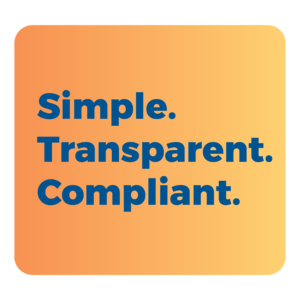Current Climate
The healthcare industry, by necessity, operates under rules and regulations that make navigating business functions uniquely challenging. From the clinician’s office to the post-surgical facility to elder care, a web of complex and often-changing compliance requirements can be daunted even for seasoned professionals.
This is true in the field of healthcare procurement, inventory management, and accounts payable, business functions tasked with keeping supplies and services flowing while maintaining a healthy bottom line—all the while maintaining compliance across a wide spectrum of requirements, policies, and industry and governmental regulations.
 Automation is the Compliance Solution
Automation is the Compliance Solution
Automation in the form of procure-to-pay software solutions offers relief for procurement professionals as well as the financial officers with whom they ideally work in tandem. The data and reporting capacities of P2P automation, across every step of the procurement process, help ensure easier compliance through transparency, accountability, and visibility to ensure that healthcare procurement and other back-office workflows are a financial and administrative benefit rather than a drain. The ways in which automated solutions relieve compliance challenges include:
- Medicare and Medicaid Requirements
Regulations and requirements from the Centers for Medicare and Medicaid Services (CMS) are complex, and when they change can impact every aspect of operations for healthcare organizations. Procure-to-pay automation data powers compliance by making documentation at procurement professionals’ fingertips, ensuring transparency in pricing for goods and services, and streamlining adherence to billing guidelines. - State and Local Regulations
Healthcare regulations can be variable across state lines and in different municipalities. For procurement professionals tasked with staying in compliance with regulations, data and reporting from P2P automation saves time and money and removes the uncertainty inherent in inefficient, outdated paper-based workflows and recordkeeping. - Government and Internal Audits
Because procurement is such a major cost center for healthcare organizations, detailed records and reports are crucial under tax audits, which can create a crushing workload in the absence of software automation. Similarly, internal audits powered by strong data and reports can be an organizational benefit through accountability and transparency rather than a divisive burden created by unclear records and information. - Contract Compliance
Solid contract compliance with vendors and suppliers drives clarity, enables cost savings, and strengthens the kind of long-term relationships that benefit both vendors and healthcare organizations. Keeping aligned with contract performance and compliance benefits everyone involved, and P2P automation is the best tool for procurement professionals to maintain control. - Healthcare Regulations Procurement processes for healthcare organizations across the continuum of care must maintain compliance with regulations and laws such as the Health Insurance Portability and Accountability Act (HIPAA) and the Affordable Care Act (ACT). A solid foundation of transparency and detailed data from ordering to invoicing and accounts payable are the strongest tools for staying in compliance.
- Vendors and Suppliers Inclusion and Diversity
With many healthcare organizations today pursuing supplier-diversity programs that mandate the inclusion of diverse vendors and suppliers, meeting those goals while maintaining mutually beneficial relationships based on transparency is key. Procurement professionals can seek out diverse suppliers of goods and services while using P2P automation to track compliance and cultivate strong relationships. - Ethical Practices
Maintaining ethical business practices is crucial across every facet of the healthcare industry. Procure-to-pay automation gives procurement professionals detailed line of sight over what is ordered at what price, and over every facet of invoicing, billing, and accounts payable. P2P automation means centralized invoicing, spend against budget reporting, and AP (Accounts Payable) clarity to maintain ethical practices that can be backed up and demonstrated through instant reports. - Data Privacy and Security
In today’s healthcare industry environment, the protection of patient and health data is a top priority from the point of healthcare delivery to the back-office functions that support it. Procure-to-pay software solutions offer state-of-the-industry data protection along with updates and support to make sure information is safe and secure.
The organizational impact of procurement workflows and processes is felt throughout organizations, from finance to points of delivery. In an always-changing regulatory and governmental landsc
ape, compliance is both mandatory across the board as well as a continual challenge.
When looking for a procure-to-pay automated solution, financial leaders and procurement officials focus on finding the right partner, which means easy adoption, responsive support, and compatibility with existing back-office systems and functions. Procurement Partners offers the industry’s leading procure-to-pay and supply chain solution with an exclusive focus on healthcare and its unique challenges and demands.

Looking to Reduce Your Annual Spend?
Procurement Partners helps healthcare organizations strengthen their supply chain operations while reducing annual spend by over 10%. As a leading healthcare supply chain software solution purpose-built for post-acute, non-acute, and continuum-of-care providers, the platform simplifies the procure-to-pay process. Users can place orders and process invoices for all suppliers through a centralized system. By automating procurement workflows, organizations report up to 40% time savings and 95% supplier contract compliance.





